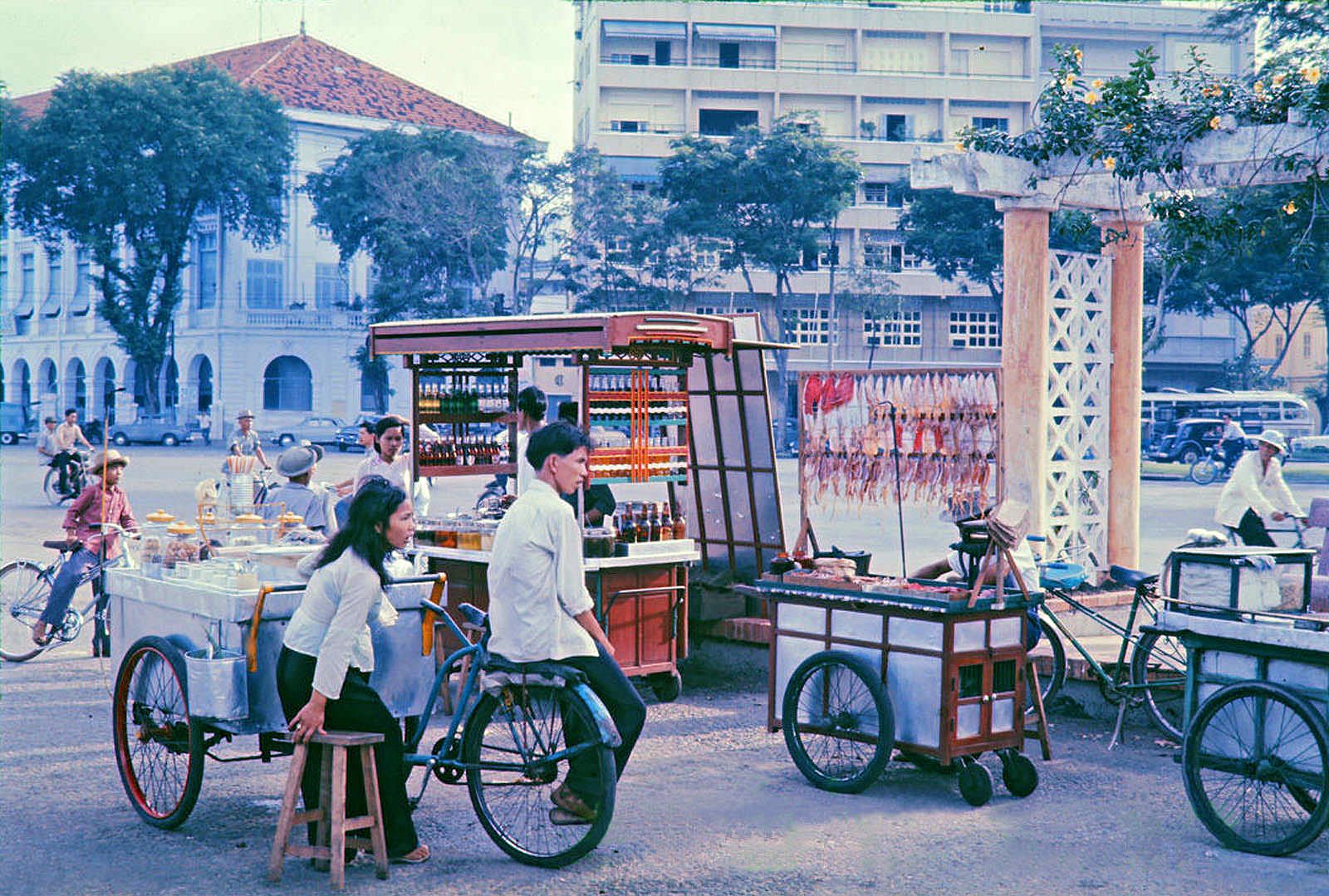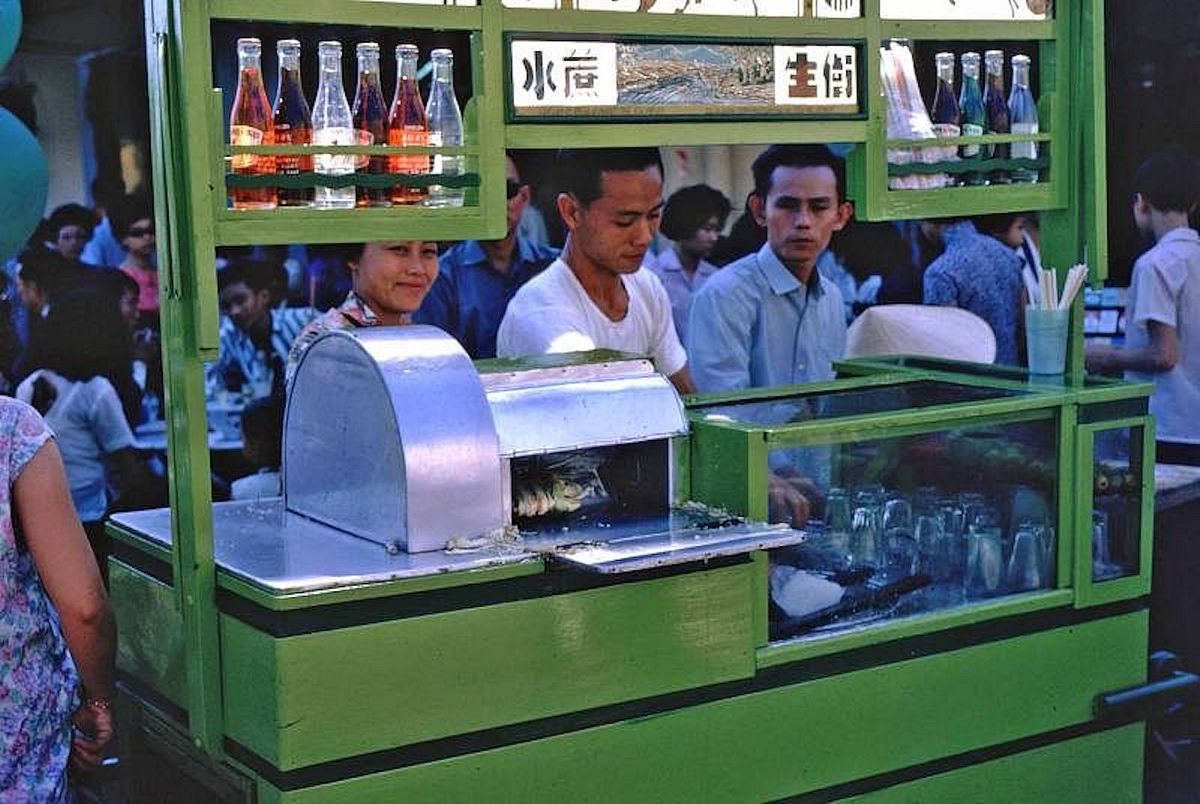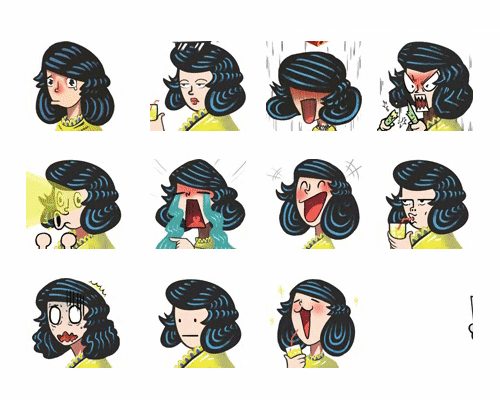“Oh this drawing?” chị Liên shouted in Vietnamese over the juicer’s raucous purring. “I don’t know who she is. Isn’t it just an advertisement?”
Within two minutes of placing an order, Liên set down in front of me an ice-cold glass filled to the brim with golden sugarcane juice, which I welcomed with open arms. April weather in Saigon is not kind to the human body: I was sweating profusely – and in unspeakable places as well, I could tell – despite the fans in Liên’s shop blasting at maximum power. On the other side of the window, the heat bounced on the asphalt like a bunny. Liên’s beverage was a godsend; the sap was cooling and pleasantly sweet with a palpable zest of nước tắc, or calamansi (a Citrus kumquat hybrid) juice, hovering in between sips.
For the sake of research, I thought seeking out my neighborhood’s resident sugarcane lady for some wisdom was a good idea, but the woman was just as clueless as I was regarding the identity of the ever-enticing but elusive cô Mía. According to Liên, the illustration was already painted on the front of her cart when she purchased it from a secondhand shop in District 6, and she didn’t care enough to make queries about the previous owner.

A standard sugarcane juice cart featuring cô Mía. Illustration by Rồng Phạm.
You’ve probably seen cô Mía around town, considering carts like Liên’s that serve freshly squeezed sugarcane juice are omnipresent all over Saigon. The image of cô Mía, or Miss Sugarcane, has also become something of a cultural icon. In most instances of her appearance, she spots a 70s-inspired fluffy hairdo with untamed, poofy curls and an enviable sheen. Her outfit, if featured at all, tends to be a saffron blouse accentuated by ruffled collars and sleeves that are reminiscent of an English judge.
For a person with such bold choices of style, little is known about Miss Sugarcane’s personality. More often than not, she’s portrayed with an enigmatic smirk, as if there’s something about the glass of sugarcane juice she’s heralding that you don’t know. Maybe it’s a few strategic drops of lime juice in the drink; maybe it’s a well-hidden ant in the ice cubes, or maybe it’s Maybelline.
It’s no wonder that many have dubbed Miss Sugarcane the “Mona Lisa of Vietnam”: it’s the absolute lack of information that lures you in. Apart from the glass of sugarcane juice in her hand, the illustration set is completed with two luscious sugarcanes and an assortment of tropical fruits – usually jackfruit, watermelon and pineapple; anything that screams fresh and thirst-quenching.
Like Liên, most proprietors of nước mía stands assume that Miss Sugarcane is a product of branding, while generations of customers who grew up with her inviting smile see her as a remnant of childhood. Cô Mía and her hodgepodge platter of exotic fruits have become a fixture of Saigon’s pavement-based camaraderie: a glass of refreshing sugarcane juice, a few rolls of bò bía, and sliced unripe mango are all you need to fuel a multitude of juicy conversations – pun intended.
Vietnam’s hot climate and ample sunlight make it the perfect breeding ground for sugarcane, which has been one of its key cash crops since ancient times. Records show that back then, crude sugar used to be part of Vietnam’s annual tributes to China during the first Chinese domination under Han rule.

Street carts in 1960s Saigon at the Bach Dang Wharf. Photo via Flickr user manhhai.
Today, sugarcane plantations are dispersed all over the country; northern provinces in the Red River Delta can grow the perennial plant during warmer months, while southern provinces cultivate sugarcane year-round. However, sugarcane’s penchant for intense sunlight means south-central localities and the Mekong Delta are capable of achieving high yields of the crop; in fact southern provinces account for 80% of Vietnam’s national sugarcane production. Most of Saigon’s street vendors source canes from fields in Tây Ninh Province, just 100 kilometers from the city. The close distance from farm to cart ensures that they remain mostly fresh and juicy right until consumption.
Being indigenous to Vietnam, sugarcane has been part of local cuisine for centuries, but juice vendors are a modern development. The appearance of cô Mía was even more recent, if photos of past Saigon are any indication.
In the 1960s, most vendors didn’t make the conscious decision to employ visual branding tactics to attract errant customers. Beverage sellers sauntered around town with their wooden carts in tow, a much classier option compared to today’s utilitarian but monotonous metallic stands. Alas, Miss Sugarcane was nowhere to be found during this era. The odd images of Saigon streets in the 70s and 80s were also frustratingly devoid of cô Mía. But by the time the 90s rolled around, she had already established her reign among the city’s population of sugarcane juice carts.

A sugarcane juice cart in Saigon in the 1970s.
While the majority of Saigoneers can describe the appearance of cô Mía from memory, few have actually gone the extra mile to track down her identity. Graffiti artist Liar Ben, however, is not most people. Ben became fascinated with the mysterious woman in the early 2010s and created the Facebook fanpage Cô Mía in 2013. The 28-year-old street artist is commonly credited with coining the nickname “cô Mía” and has spent years researching the identity of Vietnam’s sugarcane muse.
Alas, hard work doesn’t always pay off, as even Ben admitted that figuring out who cô Mía is might be a lost cause in this day and age.
A Cô Mía animated mural project by Liar Ben in Yokohama, Japan. Video via Facebook user Liar Ben.
“My attempts in promotion and researching have brought me closer to many chances to reveal the secret about the lady [cô Mía],” he shares in a post on the Facebook page. “However, honestly I have to say that my attempts were not really operative [sic] because most of those craftsmen [who painted the first cô Mía illustrations] unfortunately passed away and therefore the present drawings are just the imitation-reproduction of the past patterns.”
Liar Ben ends his musing with some philosophical thoughts regarding the role of Miss Sugarcane both as an inspiration and a bridge connecting past and present street culture. “Is finding a ‘happy ending’ for the story of cô Mía better than leaving her identity a mystery?” Ben writes.
Since its beginning in 2013, Ben’s page has become a popular online archive of cô Mía images, contributed by netizens across the length of Vietnam, and even more from nearby Laos and Cambodia. The mystery behind Miss Sugarcane has also spawned an art talk by Liar Ben, hosted by Hanoi’s Nhà Sàn Collective in 2015. For her part, cô Mía continues her larger-than-life job as sugarcane juice’s trusted brand ambassador and a source of inspiration for local creatives.


Cô Mía emoticons, a project by Min Non. Images via Behance user Min Non.
Liar Ben, still enamored with Miss Sugarcane, has added her to a plethora of murals in Saigon, Singapore and even Japan. Through Ben’s liberal compositions, the demure lady takes on a bolder personality and an, at times, risqué demeanor. Other young illustrators have given much attention to cô Mía in both personal and professional projects, so much so that she has attained “iconic” status in Saigon’s creative industry.
Much like her namesake, the allure of the “Mona Lisa of Vietnam” mostly lies in the air of mystery surrounding cô Mía’s identity, or lack thereof. Nonetheless, if the da Vinci painting is now the world’s most coveted artwork — framed and protected by layers of security measures at the Louvre Museum in Paris, Miss Sugarcane is a much simpler woman who is happy to remain a quirky part of Vietnam’s street lore.
This featured article was originally published in 2018.















